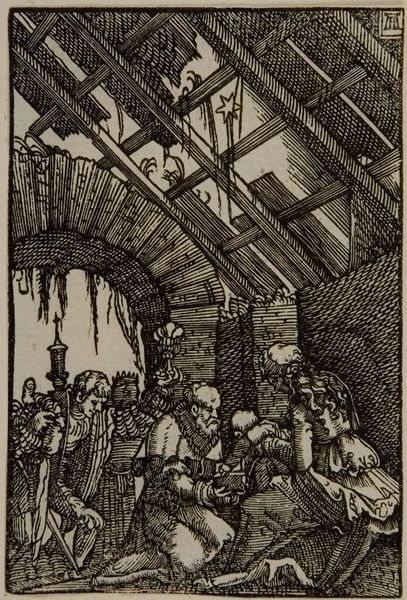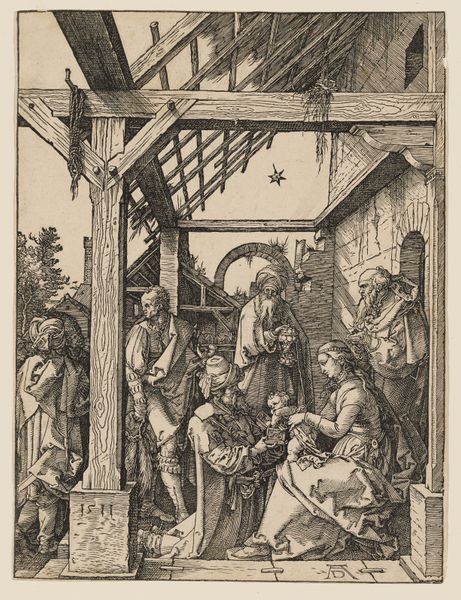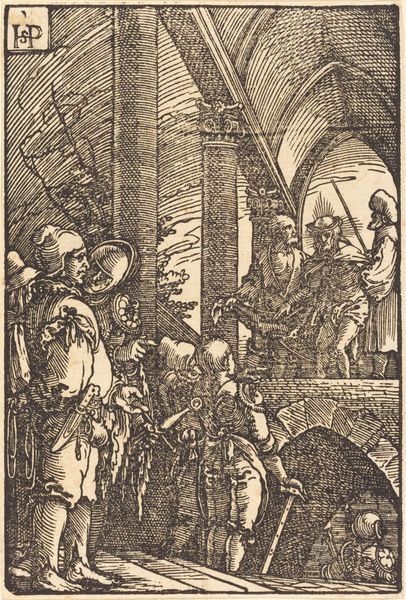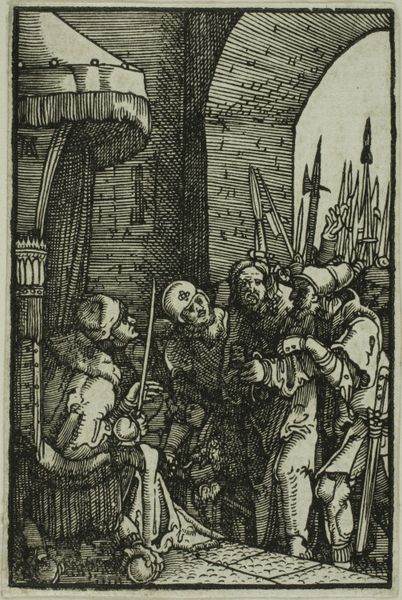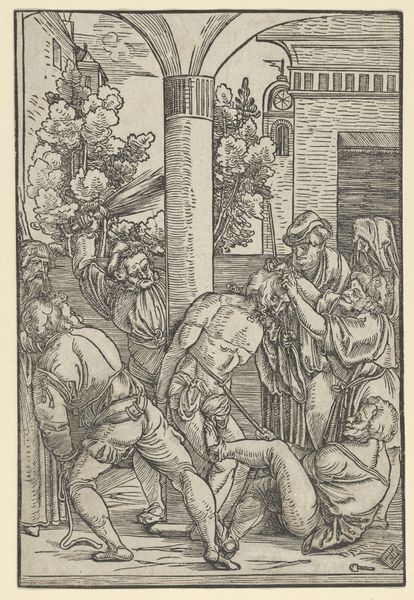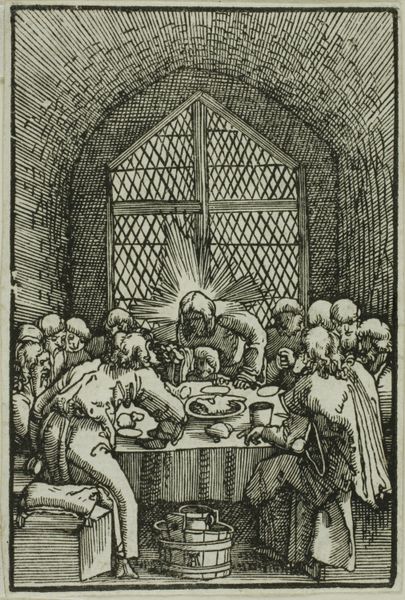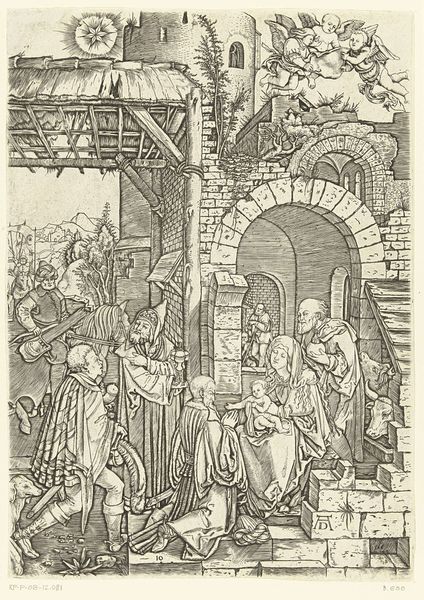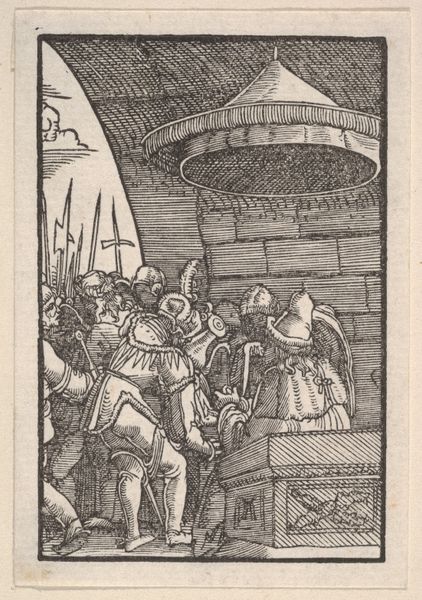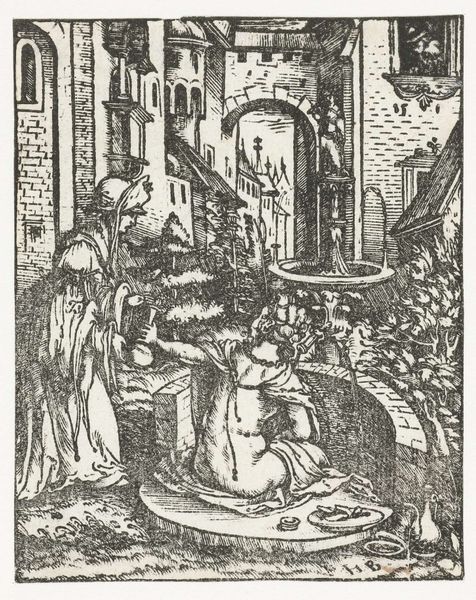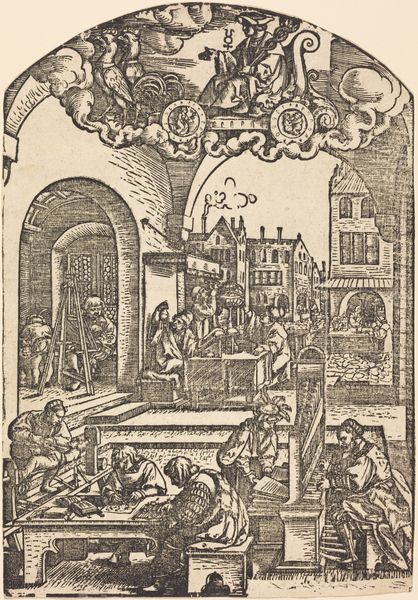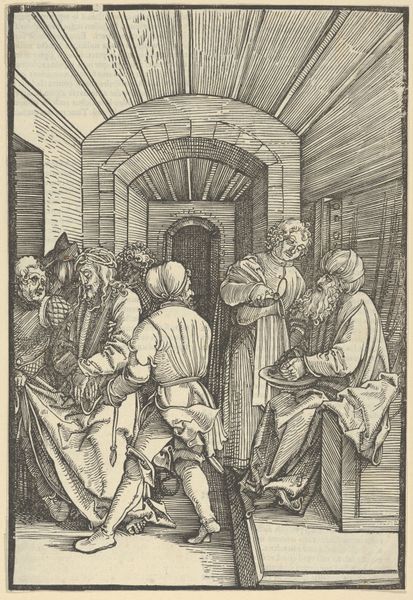
The Adoration of the Magi, from The Fall and Redemption of Man 1513
0:00
0:00
drawing, print, paper, woodcut, engraving
#
drawing
# print
#
figuration
#
paper
#
woodcut
#
line
#
history-painting
#
northern-renaissance
#
engraving
Dimensions: 72 × 48 mm (image/block/sheet)
Copyright: Public Domain
Curator: Here we have "The Adoration of the Magi, from The Fall and Redemption of Man," created in 1513 by Albrecht Altdorfer. It's a woodcut, so printed on paper. Quite small, but dense with detail. Editor: It definitely feels claustrophobic at first glance, doesn't it? All these figures crammed under this precarious, collapsing structure. It's a bit unsettling. Curator: The collapsing structure, as you call it, sets the stage, literally. It serves as the stable where the Nativity unfolds. This print belongs to a series depicting the Fall and Redemption, so the setting intentionally highlights vulnerability. Editor: Vulnerability, yes, absolutely. There’s a stark contrast between the regal figures presenting gifts and the humble, almost dilapidated surroundings. That really speaks to the core message of the Nativity, doesn’t it? Divine power born into poverty and social marginalization. Curator: Precisely! And the linear style, those sharp lines defining the figures and architectural details, emphasize the solemnity of the scene. Consider the role of the Magi themselves. Royal outsiders, acknowledging a power beyond earthly kingdoms. That subverts conventional power structures, a concept that resonated in Altdorfer’s time, just as it does now. Editor: Absolutely. It is interesting to see it through a modern lens. How does the scene reflect or challenge existing power dynamics within our contemporary socio-political contexts? This is particularly poignant given the conversations around immigration, social justice, and religious freedom. The symbolism of the Magi, with their different cultural and racial origins, is hard to ignore today. Curator: The very act of depicting the Adoration was itself a statement. Art became a vehicle to reflect anxieties and socio-political ideals. Altdorfer wasn't merely illustrating scripture; he was commenting on the societal structures of his time, making visible these moments of great significance. Editor: It's incredible how this small print, created centuries ago, continues to speak to us, to challenge our perceptions of power, privilege, and the very meaning of faith. I leave seeing parallels in present-day social issues. Curator: Yes, looking at this intricate woodcut invites reflection on history's enduring role in shaping contemporary thought.
Comments
No comments
Be the first to comment and join the conversation on the ultimate creative platform.
